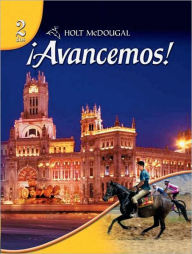
All Solutions
Page 248: Actividad 2
Right on the Yucatán Peninsula sits one of the most visited archaeological sites in Mexico, Chichen Itza. When many think of Mayan pyramids in Mexico, the dominating El Castillo, a 30-meter tall step-pyramid, comes to mind. Located halfway between the cities of Mérida and Cancún, it is the northernmost archaeological site of the Maya on the Yucatan Peninsula.
From the 10th century in Chichen Itza, there was a mixture of Toltec culture and Mayan culture, which were fully integrated by the early 13th century.
Chichen Itza reveals the internal organization of the city around the central area, which consists of three large squares, which are surrounded by institutions for various purposes (from monumental palaces to residential areas). Knowing the calendar and observing the stars made it easier for the Maya to grow crops. The 22.5 m high observatory is dedicated to the god of rain, as indicated by the stone carvings above the entrance door. In the tower itself, there is a circular staircase and several windows through which the stars were observed. The very name of the “El Carcol” Observatory (Spanish for “snail”) comes from this staircase that resembles a snail’s nest.
The temple of the warriors is surrounded by pilasters with dark figures of Toltec warriors, and around the temple are placed strange lying figures, the so-called Chacmooli, who represent the companions of the rain god Chac.
Desde el siglo X, en Chichén Itzá se mezclaron la cultura tolteca y la maya, que se integraron plenamente a principios del siglo XIII.
Chichén Itzá revela la organización interna de la ciudad en torno al área central, que consta de tres grandes plazas, la cual está rodeada de instituciones con diversos fines (desde palacios monumentales, hasta áreas residenciales). El conocimiento del calendario y la observación de los astros facilitaba a los mayas el cultivo. El observatorio, de 22,5 m de altura, está dedicado al dios de la lluvia, como indican las tallas de piedra que hay sobre la puerta de entrada. En la propia torre hay una escalera circular y varias ventanas por las que se observaban las estrellas. El propio nombre del Observatorio de El Carcol proviene de esta escalera que se asemeja a un nido de caracoles.
El templo de los guerreros está rodeado de pilastras con figuras oscuras de guerreros toltecas, y alrededor del templo se colocan extrañas figuras tumbadas, las llamadas Chacmooli, que representan a los compañeros del dios de la lluvia Chac.
Haven't found what you were looking for?
Search for samples, answers to your questions and flashcards

